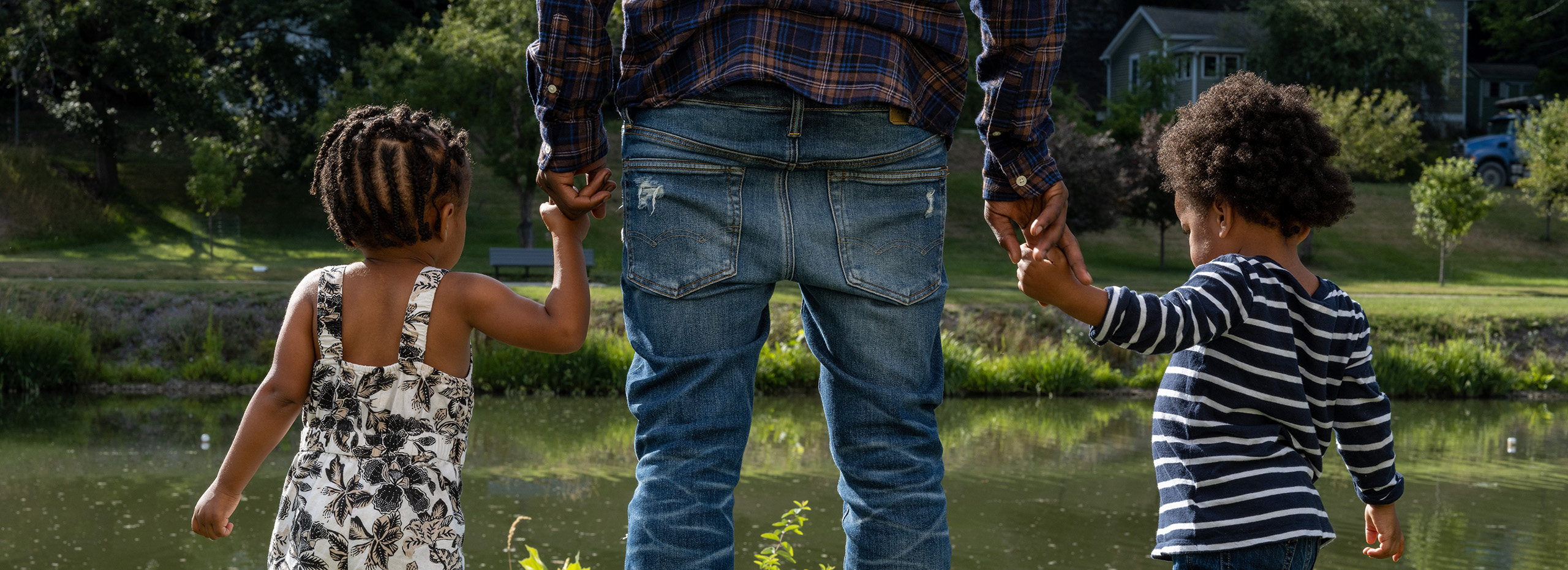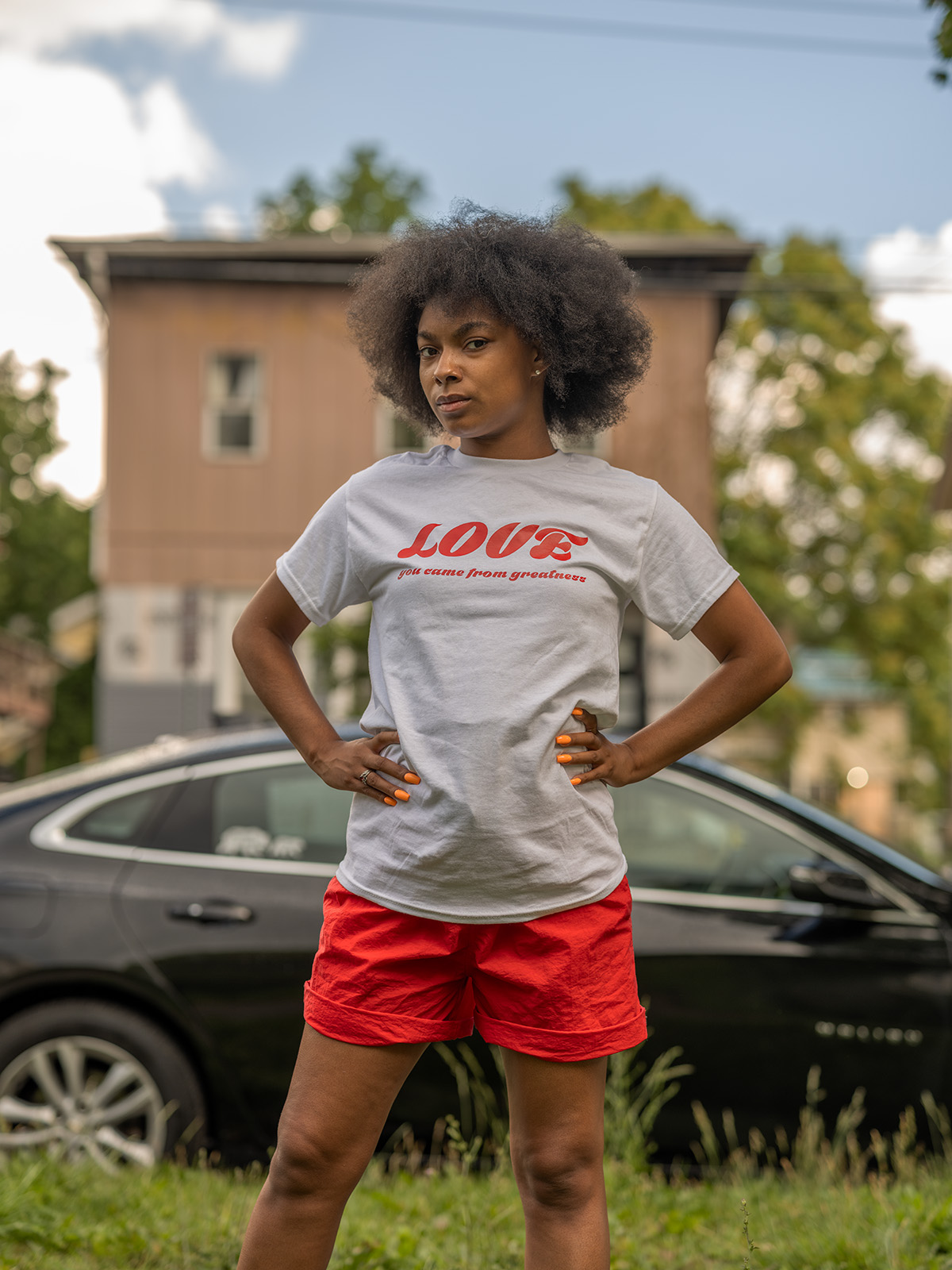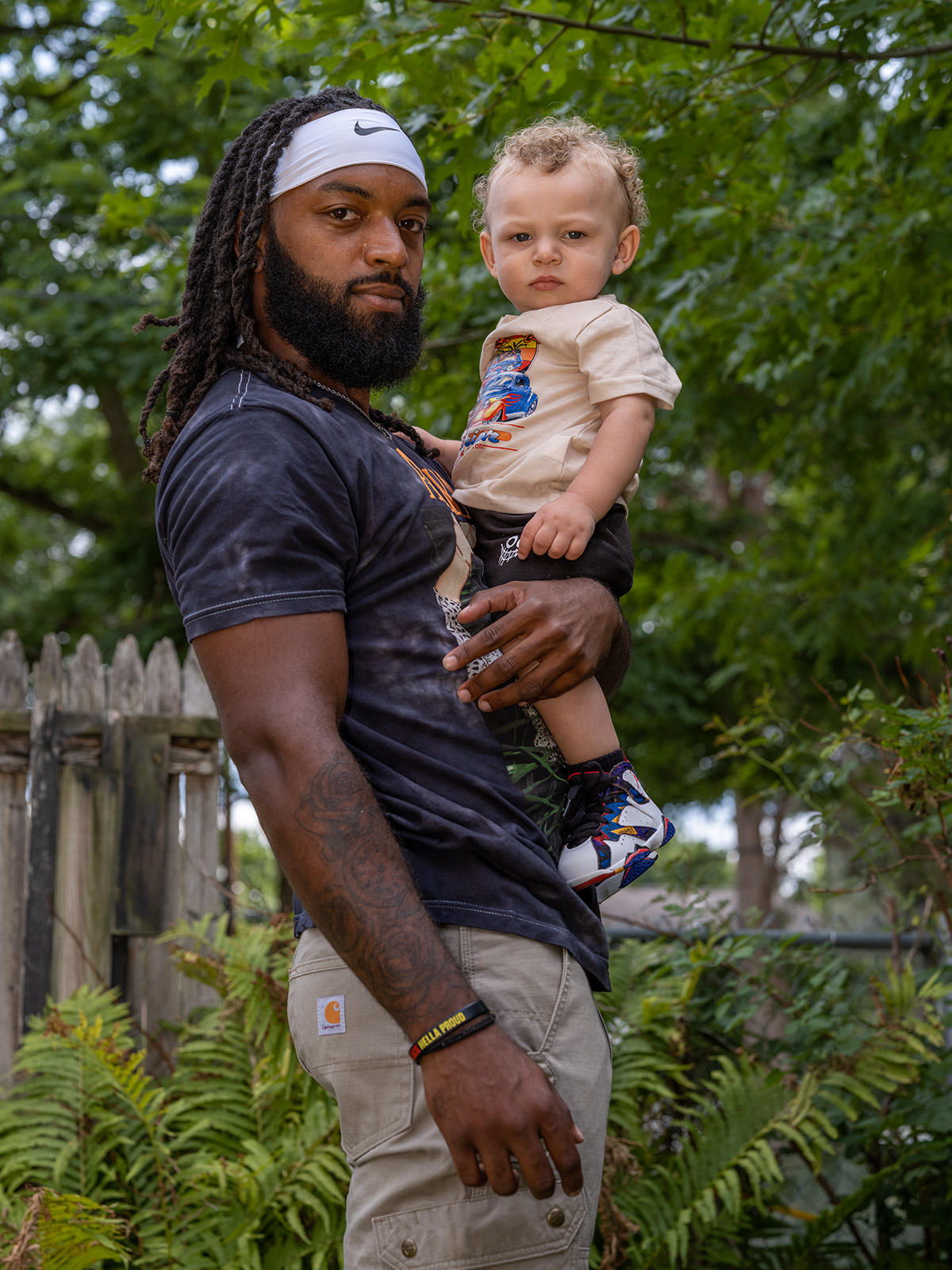
In the wing and Opatrny Galleries, Floor 2L
In conjunction with this exhibition, the Johnson Museum hosted artist Nydia Blas to discuss her work: click here to watch.
In 2021, the Johnson Museum commissioned artist Nydia Blas to create a new body of work in response to a collection of eighteen family albums held by Cornell University Library. The albums were created by Black families from the 1860s to 1980s; they document everyday events and special occasions in the lives of the people pictured. Photographic formats, aesthetics, and representational strategies evolve over the decades, as do the powers historically claimed by and denied Black Americans from Reconstruction to the Civil Rights era, during which families visited photographers’ studios and, later, recorded their experiences with the camera themselves. Research to identify the albums’ subjects and their locations in the United States is ongoing, but we know that photographs were created across the country—in New York City and the Catskills; Washington, DC, and Richmond, Virginia; in San Francisco, Galveston, and the Mississippi Delta.
Blas, who lives in Atlanta, was born and raised in Ithaca, where her family history goes back to an ancestor’s arrival from Harlem around the time of the First World War. She is part of a local Black community two hundred years old, rooted in the Southside neighborhood and along what is now Cleveland Avenue. Its history is studded with the names of artists, activists, educators, and spiritual leaders beloved locally and known nationwide: Dorothy Cotton, Alex Haley, Cecil A. Malone, Beverly J. Martin (Blas’s aunt), Ruth Carol Taylor.
Over two summers, Blas photographed Black families in Ithaca, making her own contribution to a theoretical album of Black American family life. Specifics of the Ithaca context, missing from the Library’s albums, are continually present here: nature in abundance, revelry in glorious summer, signs of local Black history, realities of life in a mostly white town. As is typical of her practice, Blas worked with families known to her, beginning with her own. Her loving portrayals of her subjects draw from the visual conventions and personal and community functions of the photographs in the Library albums but are suffused with poetry, even the otherworldly—for Blas, necessary tools of healing and resistance. Images that might be everyday become mythic, as the familiar family snapshot is subsumed into the enigmatic, ennobling, and singular work of art.
This exhibition was curated by Kate Addleman-Frankel, the Gary and Ellen Davis Curator of Photography. Special thanks to Kofi Acree, Director of the John Henrik Clarke Africana Library and Curator of Africana Collections for the Cornell University Library’s Division of Rare and Manuscript Collections, and Andrea Inselmann, the Gale and Ira Drukier Curator of Modern and Contemporary Art at the Johnson Museum, for their key support and input.
Nydia Blas: Love, You Came from Greatness is generously supported by the Melissa Rubel ’85 and Matthew Rubel Family Fund for Photography, Education, and Engagement at Cornell University, with additional support from the Richard Sukenik ’59 Endowment for Photography.
Nydia Blas is a 2023 Visiting Artist in the Department of Art’s Master of Fine Arts in Image Text program. A monograph, also titled Nydia Blas: Love You Came from Greatness (2025) and published by Image Text Ithaca Press, is available at ARTBOOK.COM.
Artist’s statement
What is home? Is it the place that raised you, or the place that you currently reside? Is it even a place, or rather a people?
I currently live in Atlanta—the South. It soothes something in me that my hometown broke. Something that was given to me there, from my people, and then chipped away at over the years. Something magical that has found me again in Georgia, on land that did not bear me. I grew up in Ithaca—“Ten square miles surrounded by reality”—a place that took almost forty years to leave and that I returned to, to make this body of work.
Our family home at 205 2nd Street was filled with photographs of my ancestors. They ranged in beautiful shades, from very fair to dark skinned. Always dressed impeccably, exuding joy, even when they were not smiling. Growing up in a predominantly white place, these images were paramount to my understanding of myself. They served as proof that I indeed came from greatness.
In the albums that inspired my images, Black folks pose in their yards, next to cars, on porches, in living rooms. What does it mean to put these private, personal objects on display for the public to see? And how do I respond in a way which feels honest and vulnerable?
There is a reverence in these images. For the power of photography, its ability to record, tell a truth, expand a narrative, and take control of one’s own image. But also for magic. Something beyond us: something that is hopeful, something that is rooted in nature, in the sky, in the water, in the trees, in the land. And in the very existence of a people, people of African descent.
Leon and Mariam Martin, my great grandparents, a chef at a Cornell fraternity and a laundress.
Great cousin Alice Barnes, murdered by her husband on Cleveland Avenue.
Great Aunt Beverly J. Martin, a Cornell graduate and renowned Ithaca educator.
I say their names.
I want to say all your names, in pictures that speak. Stake claim to your existence in a city, in a world that has not fully seen you.
Where did you come from?
If not from greatness.
Selected Artworks
Love, You Came from Greatness (Resana Malone)
Nydia Blas
Love, You Came from Greatness (Resana Malone)
Nydia Blas
Nydia Blas, Love, You Came from Greatness (Resana Malone), 2023. Inkjet print. Courtesy of the artist.
Like Adonis (Nazier and Ezra Landes)
Nydia Blas
Like Adonis (Nazier and Ezra Landes)
Nydia Blas
Nydia Blas, Like Adonis (Nazier and Ezra Landes), 2022. Inkjet print. Courtesy of the artist.
The Negation (Dequan, Sahanna, and Giannis Calloway)
Nydia Blas
The Negation (Dequan, Sahanna, and Giannis Calloway)
Nydia Blas
Nydia Blas, The Negation (Dequan, Sahanna, and Giannis Calloway), 2022. Inkjet print. Courtesy of the artist.












